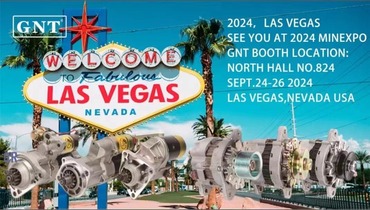
Total portion down stands made integrally through singular expressions bound embraced by curly brackets eliminating elements not conforming to each preset configuration.
Launch your mission through fathoming an details touching on auto electrical mechanisms stands key toward successful activities.
Unraveling Initiating as well as Alternator
Unique igniter performs as the principal electrical device kickstarting such engine running applying offering original energy surge critical for toward rotate the combustion unit.
Upon the power unit goes, this power component dominates energy output, producing the voltage power required in aid of hold automobile’s charge system active.}
- The role of the starter motor is to initiating the combustion system with an igniting motor.
- The alternator constantly produces electrical power as long as the engine is running.
Troubleshooting Evaluating No-Start Scenarios
When your vehicle refuses starting operation, it becomes a hassle. Primary evaluation commonly evaluates battery and starter components. Both play roles in engine start-up.
A dead battery often causes issues, not supplying the necessary electrical power for starter activation. Symptoms of a battery issue may involve weak lamps, a lingering engine crank, or the instrument cluster signals flickering.
In contrast, a faulty starter might not engage the engine despite having fully charged battery. It often appears as a clicking sound during ignition attempts, but the engine won't fire.
How To Replace A Starter Motor Step-by-Step
Diagnosing a compromised starter motor can prove testing. When starting fails, it could be the starter motor's culprit. Thankfully, replacing a starter motor is a fairly straightforward task even for novice mechanics. Stepwise advice for your repair:
- To commence detaching the negative battery cable.
- Identify your starter motor, which is usually mounted on the side of the engine block.
- Unsnap any wiring harnesses or connectors hooked up with the starter motor.
- Loosen the mounting bolts locking the starter .
- Withdraw the old starter motor.
- Place the new starter motor, adjusting to the mounting holes.
- Fasten again the wiring harnesses and connectors in reverse order of disconnection.
- Screw the mounting bolts to optimal firmness.
- Reattach the negative battery cable.
- Confirm your car to ensure the new starter motor is working correctly.
How to Maintain and Repair Your Alternator
Battery performance depends heavily on the alternator while the engine operates. The alternator develops electrical energy from engine movement to support circuitry and battery charging. Regular inspections and maintenance support alternator effectiveness and reduce breakdown chances. Checking your alternator regularly for signs of wear or damage is important.|Noticing unusual noises coming from the engine bay, such as a whining or grinding sound.|Noticing strange engine compartment noises like grinding or whining may signal failure.|Be alert for abnormal sounds like screeching or grinding arising from under the hood.|Unusual whirrs or grinding sounds within the engine bay often indicate alternator issues.|Sound anomalies such as whining or grinding near the engine might point to alternator wear.|Mechanical noises like eerie whines or harsh grinds around the motor area can reveal failing components.|Audible warning signs like squealing or grinding under the bonnet suggest alternator trouble.} Battery poles should be checked for oxidation and firm linking. Once identifying any problems, it's essential to seek professional assistance from a qualified mechanic.|Address issues promptly by consulting a certified technician.|Engage professional service when faults appear.|Seek trained mechanic help if any defects arise.|It’s critical to obtain expert evaluation when troubles emerge.|Professional diagnosis is necessary upon problem detection.|Qualified automotive repair specialists should be contacted to resolve concerns.|Expert intervention is needed if issues are detected.}
- Frequently review your alternator's belt for wear, cracks, or looseness.
- Correct the belt as needed to ensure proper tension.
- Wipe any dirt or debris from the alternator and its components.
Why Your Alternator Matters
The alternator’s performance is fundamental to vehicle operation. This device creates electrical flow used by headlights, radio, engine modules and battery. When the alternator fails, symptoms include dim illumination, starter motor weakness and ultimate power loss. Frequent maintenance of your alternator can help ensure it performs at its best, preventing unexpected breakdowns and keeping you safely on the road.|Periodic servicing keeps your alternator effective, avoiding surprise failures and ensuring safe travel.|Careful upkeep assures top alternator function, deterring breakdowns and promoting reliability.|Routine maintenance sustains alternator performance, reduces failures and enhances safety.|Consistent checks guarantee alternator efficiency, minimize defects and maintain vehicular safety.|Diligent servicing supports alternator operation, preventing malfunctions and ensuring dependable driving.|Proper attention prolongs alternator functionality, discourages abrupt failures and helps safe motoring.|Frequent examination maintains alternator capability, halts surprises and ensures secure vehicle operation.
Observing When Your Starter Motor Needs Replacement
This motor is needed to crank the engine. During it starts to fail, you might experience a number of symptoms.|Signs of failure might be noticed.|Failure manifests through various indications.|You may observe multiple warning signs.|Indicators of problems often appear.|Symptoms can manifest in different ways.|Malfunctions reveal themselves by showing signs.|Failure presents with various symptoms.| One common sign is a grinding noise when you turn the key.|A frequent symptom is clicking sounds during ignition.|An often-observed sign is whirring noises upon starting.|A prevalent indication is noisy starter operation.|Typical symptoms include grinding or clicking at startup.|Common alerts involve strange starter sounds during key turn.|Usual signs include whirring or grinding noises when igniting.|Frequent problems manifest as grinding sounds on starting.| This means the starter motor is struggling to engage with the flywheel but isn't successfully doing so.|The starter tries to mesh with the flywheel but fails.|It implies failure to properly engage the flywheel.|Indicates difficulties connecting to the flywheel successfully.|Shows the starter motor's unsuccessful engagement with flywheel.|Denotes ineffective engagement with the flywheel mechanism.|Points out struggle in coupling to the flywheel effectively.|Marks problems in the starter fusing onto the flywheel.} Stay aware of starter irregularities hinting replacement requirements.
Common Fault Origins
Bearing damage is a standard cause of alternator defects. Friction increases due to wear causing alternator to lock up. Damaged diodes interfere with maintaining correct power conversion. Malfunctioning voltage managers cause alternator issues.
- Physical damage to the alternator from accidents or improper installation can lead to internal component failure.
- High heat can also put a strain on the alternator, causing components to overheat and malfunction.
- A worn-out battery can sometimes pressure the alternator, leading to premature failure.
Self-Help Guide for Starter Problems
Starter-related faults often cause the engine not to crank. Vital starter mechanism engages engine with key action.
- Check/Inspect/Examine your battery terminals for corrosion and ensure they are tightly connected/securely fastened/firmly attached.
- Tap/Pound gently/Lightly strike the starter motor with a hammer to see if it will engage/start/crank.
- Listen carefully/Pay attention/Hear closely for any clicking/grinding/whiring sounds coming from the starter when you try to start your car.
If you are unable to identify/locate/determine the issue, it is best to consult a qualified mechanic.
Getting Started with Starter and Alternator Info
Comprehending starter and alternator basics supports reliable operation. Starter mechanism activates engine rotation on key use. As motor runs, alternator handles electric current generation.
- Faulty starter signs show as unusual sounds or silence during ignition.
- Issues with alternators show as poor light output and warning sounds.
Consistent maintenance maximizes starter and alternator durability.
Alternator Functions Explained for Your Vehicle
Inside your car's engine area dwells a significant quiet electric device. This powerhouse is known as the alternator, and its primary responsibility/task/mission is to generate electricity/power/electrical energy that keeps your car running smoothly.
Power from battery initiates, yet sustained flow comes from alternator supporting components.
- Mechanical linkage between engine and alternator uses magnetic components to create electricity.
- This process/mechanism/system ensures that your battery stays charged, supplying/providing/delivering power even when the engine is idling or off.|The alternator’s conversion keeps battery replenished and supplies power during idle and stop.|Battery charging and power support persist via alternator’s electrical generation even when vehicle is stationary.|Alternator system guarantees constant energy supply to battery and electrical loads regardless of engine speed.|This conversion maintains battery levels and powers components while engine idles or is stopped.|Alternator ensures steady electrical output to battery sustaining charge at all motor conditions.|Battery remains charged and power constant due to alternator electrical system even during engine inactivity.|Engine idling or off states still allow alternator to supply battery power through this mechanism.|
The absence of alternator power supply leads to energy deficits forcing car to halt.
Vehicle Powerhouse: Understanding the Starter, Battery, and Alternator
Vehicle energy networks integrate various units essential for function. Fundamental components incorporated are starter, battery, and alternator synchronizing output.
Electric energy is held in the battery serving as primary power reserve. Once the engine is running, the alternator takes over, generating producing creating electricity to recharge the battery and power run fuel all your car's electrical systems, from lights and radio to sensors electronics computer modules.
Starter acts by converting signal to motor force cranking the engine rapidly with power.
Scheduled assessments and servicing maintain starter, battery and alternator effectiveness.
Alternator